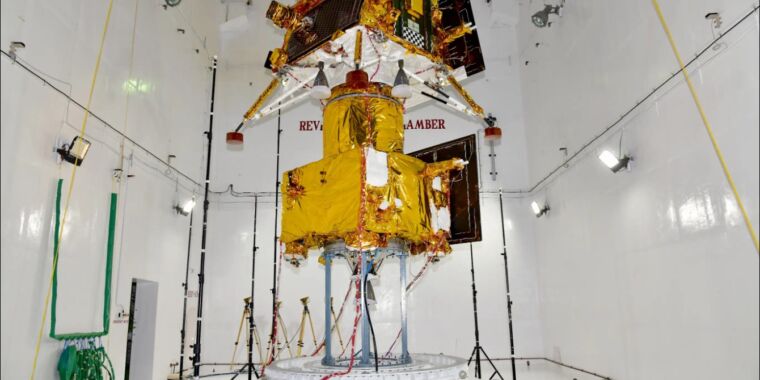India reveals that it has returned lunar spacecraft to Earth orbit | India now credibly has the third most advanced deep-space program in the world.::India now credibly has the third most advanced deep-space program in the world.
Good for them hopefully they can also advance socially.
- Me when I’m reading about US army’s ‘capabilities’
So we now have Cosmonauts, Astronauts, Taikonauts and … Hindunauts?
I get you’re joking but for real they haven’t announced yet what they’ll be called. Soon speculation came out that they would use either “vyomanauts” or “gaganauts” which would both translate to “sky… nauts” in Sanskrit
Oh no if they go with gaganauts…
That would be kind of an understatement, wouldn’t it?
Why would India have the only name based on religion?
“Hindunauts” was simply the first name I came up with. Maybe that is because India is ruled by a nationalist-theocratic party. However, in the first place I just made a joke and will happily accept good proposals of better/secular names. What name do you propose?
I wish we’d just have an internationally standardized term for this…
Imagine what they could do if they put those resources to improving the lives of the 80% of the country that lives in poverty…
This is the best summary I could come up with:
A little more than three months ago the Indian space agency, ISRO, achieved a major success by putting its Vikram lander safely down on the surface of the Moon.
The primary task of the propulsion module was to deliver the Vikram 3 lander into a low-lunar orbit, 100 km above the surface of the Moon.
By looking at Earth from a distance, this innovative science experiment seeks to set a benchmark for what to expect from the atmospheric signatures of exoplanets that may be capable of supporting life.
India has not declared its future plans for the Moon beyond the Lunar Polar Exploration Mission, a joint operation with the Japanese space agency, JAXA.
That mission is planned to carry a lunar lander and rover to the south pole of the Moon later this decade, but no earlier than 2026.
Given the demise of the Soviet Union and Russia’s lack of successful missions beyond low-Earth orbit, India now credibly has the third most advanced deep-space exploration program in the world.
The original article contains 630 words, the summary contains 169 words. Saved 73%. I’m a bot and I’m open source!
Removed by mod




